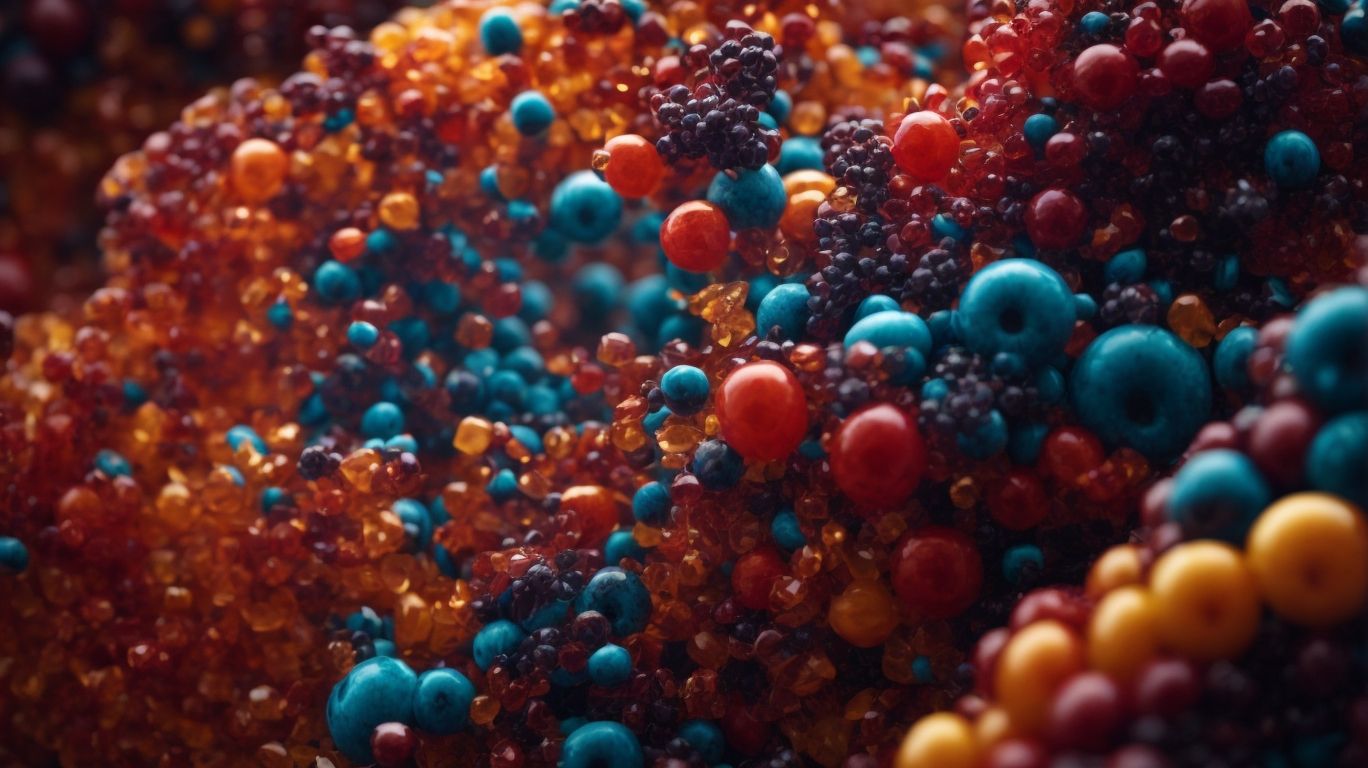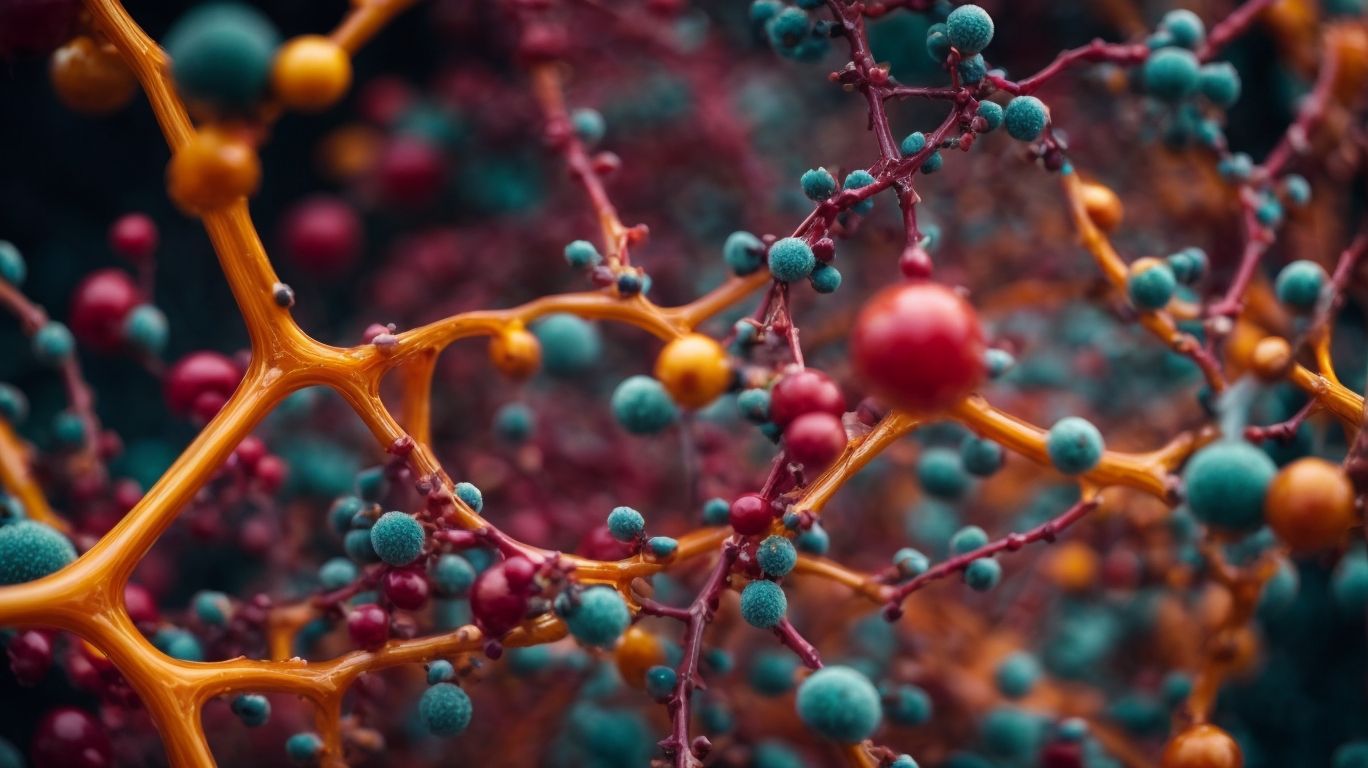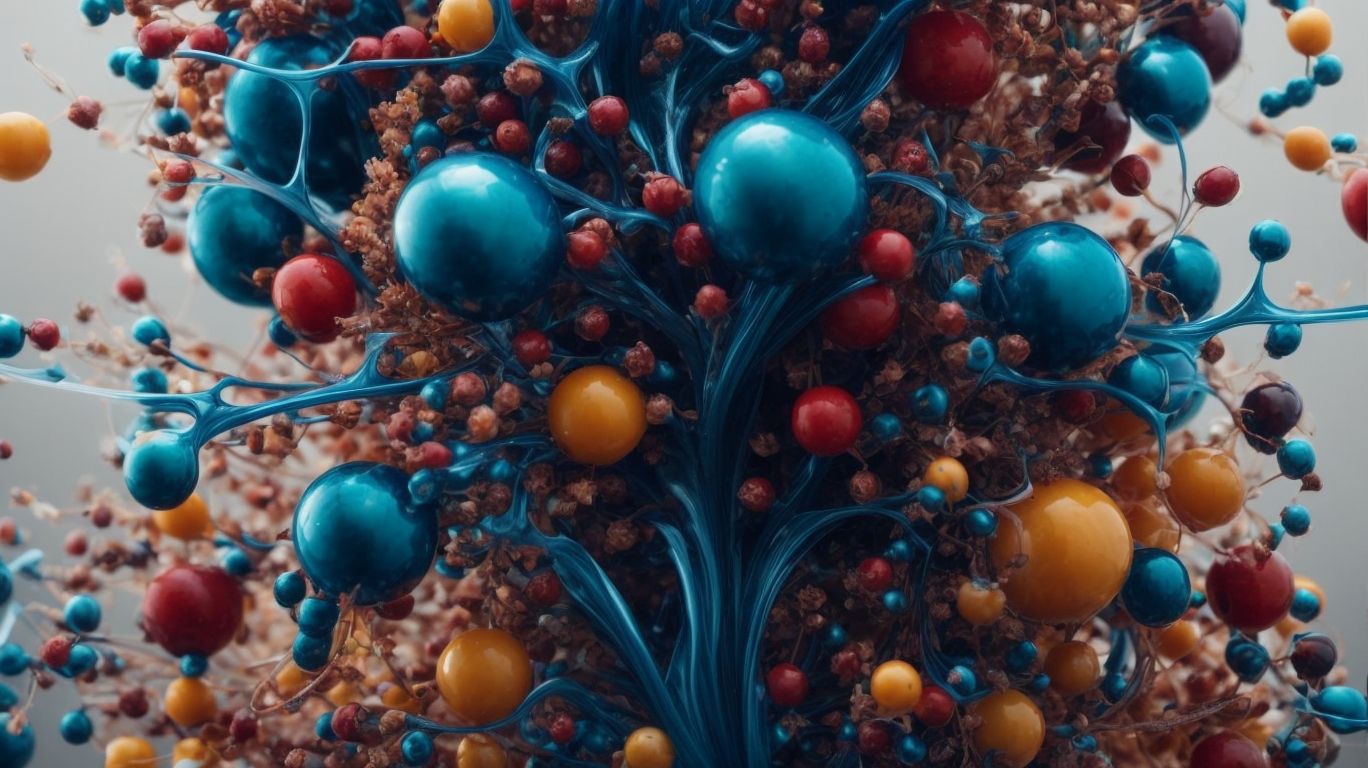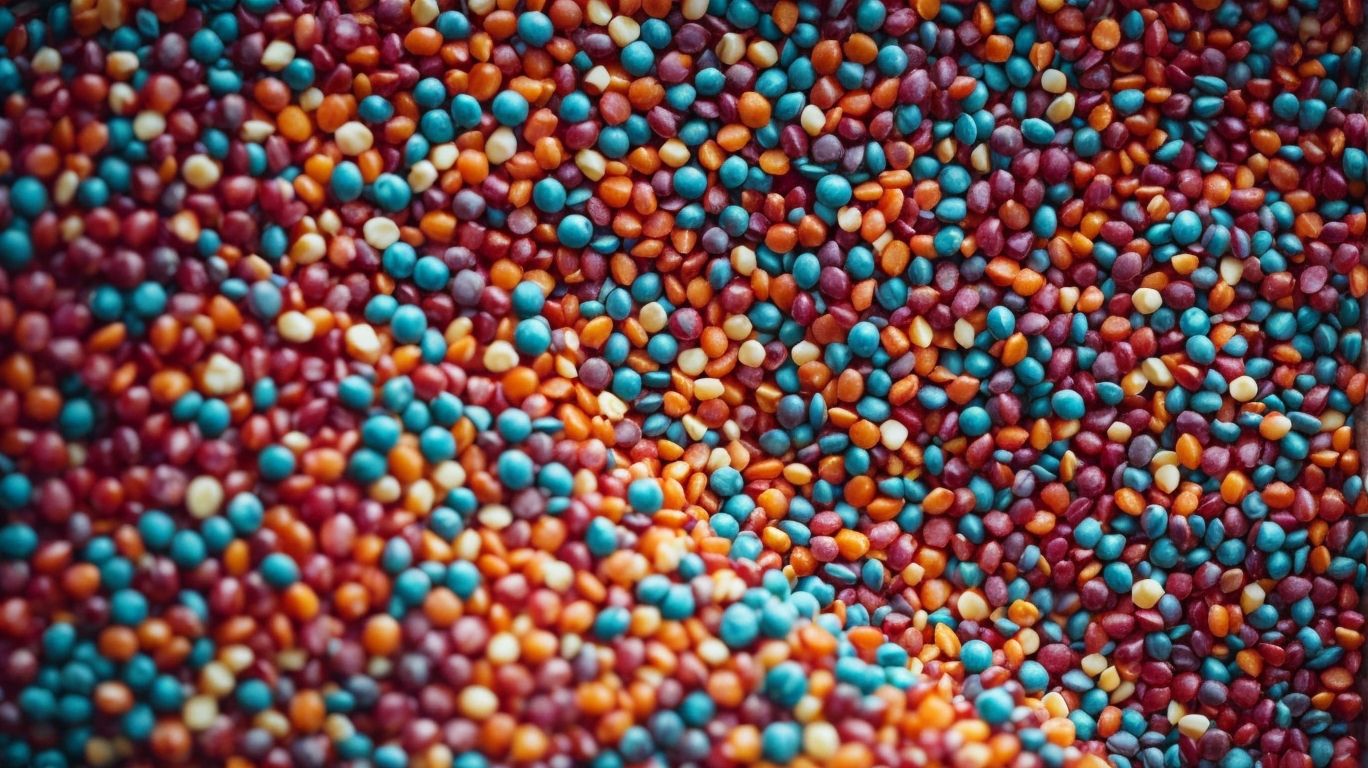Glucose and fructose are two types of simple sugars that play crucial roles in our body’s energy production. These sugars are commonly found in fruits, vegetables, and processed foods. While they may have a similar sweet taste, they have distinct chemical structures and functions in the body.
Glucose is a monosaccharide, meaning it is the simplest form of sugar and cannot be broken down into smaller sugars. Its chemical formula is C6H12O6, and it is the primary source of energy for our body’s cells. On the other hand, fructose is a monosaccharide with the chemical formula C6H12O6, but its molecular structure is slightly different from glucose.
The main difference between glucose and fructose lies in their chemical structures. Glucose has a ring structure, while fructose has a linear structure. This difference in shape affects how they are metabolized in the body. Glucose is easily broken down and absorbed into the bloodstream, while fructose needs to be converted into glucose by the liver before it can be used as energy.
Both glucose and fructose are used by the body for energy production, but there are some key differences in their functions. Glucose is the preferred source of energy for most cells, while fructose is primarily metabolized by the liver. Additionally, consuming too much fructose can lead to an increase in fat production and may contribute to conditions like obesity and type 2 diabetes.
In terms of health effects, both glucose and fructose can affect blood sugar levels, but fructose has a more significant impact. Glucose is quickly absorbed into the bloodstream, leading to a spike in blood sugar levels, while fructose is processed by the liver, causing a slower increase in blood sugar levels. Consuming too much glucose can also result in insulin resistance and an increased risk of chronic diseases.
Incorporating glucose and fructose into a healthy diet is essential for meeting our body’s energy needs. It is best to consume these sugars in moderation and from natural sources like fruits, vegetables, and whole grains. Healthy sources of glucose include foods like brown rice, whole wheat bread, and sweet potatoes, while fruits like apples, blueberries, and mangoes are good sources of fructose. It is important to limit processed foods and added sugars as they often contain high levels of glucose and fructose, which can have negative impacts on our health.
Key Takeaways:
What Are Glucose and Fructose?

Photo Credits: Chemicalglossary.Net by Donald Scott
Glucose and fructose are two types of simple sugars with distinct chemical structures and properties. While glucose is a main source of energy for our bodies and can be found in foods like fruits, vegetables, and grains, fructose is the sweetest natural sugar and is commonly found in fruits and honey. It is also added to many processed foods and beverages in the form of high fructose corn syrup.
Although both glucose and fructose can be metabolized by our bodies, excessive consumption of fructose has been associated with health concerns such as obesity and diabetes. Therefore, it is important to consume these sugars in moderation and prioritize whole food sources.
What Are the Chemical Structures of Glucose and Fructose?

Photo Credits: Chemicalglossary.Net by Jesse Adams
The chemical structures of glucose and fructose have slight differences, resulting in unique properties and functions. Here is a comparison:
| Chemical Structure | Glucose | Fructose |
| Molecular Formula | C6H12O6 | C6H12O6 |
| Functional Groups | Aldehyde Group | Ketone Group |
| Isomer | Aldose | Ketose |
| Position of Carbonyl Group | At Carbon 1 | At Carbon 2 |
These structural differences contribute to variations in taste, sweetness levels, and metabolic pathways. Understanding these distinctions is crucial in comprehending the roles of glucose and fructose in biological processes.
What Is the Difference Between Glucose and Fructose?
Glucose and fructose are two types of simple sugars with distinct chemical structures and properties. The main differentiating factor between the two lies in their molecular arrangement. While glucose has a six-carbon structure, fructose has a five-carbon structure. This structural variation impacts their taste and how they are metabolized in the body. Glucose serves as the primary source of energy for the body’s cells, while fructose is primarily metabolized in the liver. It is important to consume both sugars in moderation as part of a well-balanced diet, as excessive consumption of either can have negative health effects, such as an increased risk of obesity and type 2 diabetes.
Fun fact: Glucose is often referred to as “blood sugar” because it is the main sugar found in the bloodstream.
How Are Glucose and Fructose Used in the Body?

Photo Credits: Chemicalglossary.Net by Stephen Johnson
Glucose and fructose are both essential components in the body, serving as sources of energy and building blocks for various molecules. Here are the steps in which they are utilized:
- Upon consumption, glucose is absorbed into the bloodstream, raising blood sugar levels.
- Cells absorb glucose and convert it into energy through cellular respiration.
- Excess glucose can be stored in the liver and muscles as glycogen for future use.
- Fructose is metabolized in the liver and can be used for energy, stored as glycogen, or converted into fatty acids.
- Additionally, fructose is used in the synthesis of other molecules such as triglycerides and cholesterol.
What Are the Similarities Between Glucose and Fructose in the Body?
Glucose and fructose, both simple sugars, have some similarities in their processing within the body. They are both broken down to produce energy and can be transformed into other molecules for various cellular functions. Additionally, both glucose and fructose can be stored as glycogen in the liver for future use.
However, there are also significant differences between the two. Glucose is the primary source of energy for the body, while fructose is primarily metabolized in the liver. Consuming excessive amounts of fructose has been associated with negative health consequences, such as an increased risk of obesity and metabolic disorders. Overall, while glucose and fructose follow similar metabolic pathways, their impacts on the body vary.
What Are the Differences Between Glucose and Fructose in the Body?
Glucose and fructose are both types of simple sugars, but they have distinct chemical structures and are processed differently by the body. Glucose is the main source of energy for the body and is quickly absorbed into the bloodstream. On the other hand, fructose is metabolized in a different way and is mainly processed by the liver. This difference in metabolism can have various effects on the body, including the impact on blood sugar levels and potential health risks associated with excessive consumption of each sugar.
To incorporate glucose and fructose into a healthy diet, focus on consuming whole fruits as a natural source of fructose, and opt for complex carbohydrates for glucose.
What Are the Health Effects of Glucose and Fructose?

Photo Credits: Chemicalglossary.Net by Kyle Davis
The health effects of glucose and fructose differ due to their different metabolic pathways in the body. Glucose is the primary source of energy for our cells and is quickly absorbed into the bloodstream, raising blood sugar levels. Excessive glucose consumption can lead to weight gain, diabetes, and other health issues. On the other hand, fructose, commonly found in fruits and added sugars, is metabolized by the liver and can contribute to liver fat accumulation, insulin resistance, and metabolic syndrome. To maintain a healthy diet, it is important to consume both glucose and fructose in moderation.
How Does Glucose Affect Blood Sugar Levels?
Glucose affects blood sugar levels through the following steps:
- Consumption: When we consume foods that contain carbohydrates, our body breaks down complex carbohydrates into glucose.
- Transportation: Glucose is then absorbed into the bloodstream and transported to cells for energy.
- Insulin release: The pancreas releases insulin, a hormone that helps regulate blood sugar levels.
- Uptake by cells: Insulin enables cells to take in glucose from the bloodstream, lowering blood sugar levels.
- Energy production: Cells use glucose as fuel for energy production.
- Blood sugar regulation: Insulin continues to regulate blood sugar levels, ensuring they stay within a healthy range.
How Does Fructose Affect Blood Sugar Levels?
Fructose has a different effect on blood sugar levels compared to glucose due to its metabolism in the liver. Here are the steps that explain how fructose affects blood sugar levels:
- Fructose is metabolized in the liver.
- Unlike glucose, fructose does not require insulin for uptake into cells.
- Fructose is converted into glycogen, which is stored in the liver.
- Excess fructose is converted into triglycerides, which can contribute to elevated blood triglyceride levels.
- High fructose intake has been linked to insulin resistance and an increased risk of type 2 diabetes.
Sarah noticed that after consuming foods high in fructose, her blood sugar levels would spike more than when she consumed foods high in glucose. She made changes to her diet by limiting her fructose intake and saw improvements in her overall blood sugar control.
What Are the Health Risks of Consuming Too Much Glucose?
Consuming excessive amounts of glucose can have detrimental effects on one’s health. One major concern is the impact on blood sugar levels, as high intake of glucose can cause spikes in blood sugar, leading to insulin resistance and an increased risk of developing type 2 diabetes. Additionally, consuming too much glucose can contribute to weight gain, as excess glucose is stored as fat in the body. It can also lead to dental issues, as glucose is a primary source of fuel for harmful bacteria in the mouth, increasing the risk of tooth decay. To maintain a healthy diet, it’s important to moderate glucose intake and choose healthier sources like whole grains, fruits, and vegetables.
True story: Jennifer, a former athlete, used to consume a high amount of sugary energy drinks daily. Over time, her excessive glucose intake resulted in weight gain, unstable blood sugar levels, and a prediabetes diagnosis. After making dietary changes and incorporating healthier sources of glucose, such as oatmeal and sweet potatoes, Jennifer was able to stabilize her blood sugar levels and improve her overall health.
What Are the Health Risks of Consuming Too Much Fructose?
Excessive consumption of fructose can have negative impacts on overall health, including contributing to obesity, metabolic syndrome, and type 2 diabetes. The liver is responsible for metabolizing fructose, and when consumed in large amounts, it can result in fatty liver disease. Additionally, high levels of fructose can lead to increased triglyceride levels, which can raise the risk of heart disease. There is also evidence linking high fructose intake to an increased risk of gout and insulin resistance.
To maintain a healthy balance, it is important to moderate fructose consumption by limiting sugary drinks, processed foods, and sweets. It’s crucial to note that the liver can become overwhelmed by excessive fructose intake, causing it to convert the excess into fat.
How Can You Incorporate Glucose and Fructose into a Healthy Diet?

Photo Credits: Chemicalglossary.Net by Ethan Robinson
To incorporate glucose and fructose into a healthy diet, follow these steps:
- Eat whole fruits: Fruits like apples, berries, and oranges contain natural sugars, including glucose and fructose, along with fiber and other nutrients.
- Choose fresh vegetables: Vegetables like carrots, beets, and sweet potatoes also contain natural sugars, including glucose and fructose, while providing essential vitamins and minerals.
- Include whole grains: Whole grains, such as brown rice, quinoa, and oats, provide a slow release of glucose and fiber, promoting steady energy levels.
- Limit added sugars: Minimize processed foods and beverages with added sugars, such as sugary drinks, sweets, and desserts, to reduce excess fructose intake.
- Balance intake: Pay attention to overall calorie intake and maintain a balanced diet with a variety of nutrient-dense foods.
In the 18th century, scientists discovered that glucose and fructose are the building blocks of carbohydrates and are essential for energy production in the body.
What Are Some Healthy Sources of Glucose?
There are numerous healthy sources of glucose that you can include in your diet. Some examples include fruits such as bananas, apples, and oranges, as well as whole grains like oats, brown rice, and quinoa. Other sources include starchy vegetables like sweet potatoes and legumes like lentils and chickpeas. These foods offer a balanced combination of carbohydrates, fiber, and essential nutrients, making them a nutritious option for providing energy to your body. Just remember to consume glucose in moderation and as part of a well-rounded diet.
What Are Some Healthy Sources of Fructose?
When searching for healthy sources of fructose, it is important to opt for whole fruits rather than processed foods. Fruits such as apples, berries, and oranges are excellent natural sources of fructose. Not only do they provide fructose, but they also contain essential vitamins, minerals, and fiber. Consuming fruits in their whole form can help regulate blood sugar levels and offer additional health benefits.
However, it is crucial to consume fructose in moderation and not exceed the recommended daily intake. Incorporating fruits into a well-rounded diet is a fantastic way to enjoy the numerous health benefits of fructose.
Frequently Asked Questions
What are glucose and fructose?
Glucose and fructose are two types of simple sugars that are essential for the human body’s metabolism. They are classified as monosaccharides, which are the most basic form of carbohydrates.
What is the difference between glucose and fructose?
The main difference between glucose and fructose is their structure and function. Glucose is the primary source of energy for all living organisms and is commonly referred to as blood sugar. Fructose, on the other hand, is primarily metabolized in the liver and is involved in fat production.
How are glucose and fructose produced?
Glucose is produced by breaking down larger sugar molecules, while fructose is found in its simplest form in fruits and vegetables. Glucose can also be prepared by boiling sucrose in an alcoholic solution with dilute HCl and H2SO4, or from starch through hydrolysis with diluted H2SO4.
What are the main functions of glucose and fructose in the human body?
Glucose is the main source of energy for the human body, while fructose is involved in energy production and fat formation. Glucose is also regulated by the hormone insulin and is commonly referred to as blood sugar.
What are the uses of glucose and fructose?
Glucose is commonly used as an energy source for the body, for medical treatments, and as a monomer for polymer reactions. Fructose is used in the food industry to improve flavor, and can also be used for energy production and fat formation in the body.
What are the health implications of consuming glucose and fructose?
Consuming excessive amounts of glucose and fructose, especially in the form of processed foods, can lead to health issues such as obesity, fatty liver disease, and high insulin levels. It is important to monitor intake and maintain a balanced diet.
